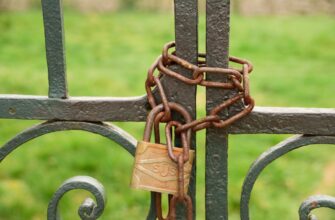- Why Offline Account Encryption Matters More Than Ever
- Encryption Basics: Your Digital Safety Deposit Box
- Top 3 Beginner-Friendly Offline Encryption Tools
- Step-by-Step: Encrypting Accounts Offline in 5 Minutes
- Critical Security Practices for Offline Encryption
- Offline Encryption FAQ
- Q: Is offline encryption really necessary if I use strong passwords?
- Q: Can I access my encrypted accounts from multiple devices?
- Q: What happens if I lose my master password?
- Q: Are free encryption tools actually secure?
- Q: How often should I update my encrypted database?
- Take Control of Your Digital Safety Today
Why Offline Account Encryption Matters More Than Ever
In today’s digital landscape, encrypting sensitive accounts offline is your first line of defense against data breaches. Unlike cloud-based encryption, offline methods keep your credentials completely disconnected from internet vulnerabilities. For beginners, this approach eliminates complex setups while providing military-grade protection for banking logins, email passwords, and private documents. With ransomware attacks increasing by 150% annually (FBI 2022), taking control of your security has never been more urgent.
Encryption Basics: Your Digital Safety Deposit Box
Think of offline encryption as creating an unbreakable digital vault on your device. When you encrypt accounts offline:
- No internet = No hacking: Data exists only on your physical device
- End-to-end control: You hold the only keys (passwords)
- Zero knowledge architecture: Even service providers can’t access your data
Unlike password managers that sync to the cloud, offline encryption uses AES-256 bit encryption – the same standard governments use for top-secret documents.
Top 3 Beginner-Friendly Offline Encryption Tools
- VeraCrypt (Windows/Mac/Linux): Creates encrypted “containers” disguised as ordinary files. Free and open-source.
- KeePassXC (Cross-Platform): Stores passwords in a local encrypted database with auto-fill capabilities.
- Cryptomator (Mobile/Desktop): Encrypts files before they touch cloud storage with transparent encryption.
Pro Tip: Always download tools from official websites to avoid malware-laced imitations.
Step-by-Step: Encrypting Accounts Offline in 5 Minutes
Follow this foolproof method using KeePassXC (Windows example):
- Download KeePassXC from keepassxc.org and install
- Launch the app > Click “Create new database”
- Name your file (e.g., “MyAccounts.kdbx”) and save locally
- Set a 20+ character master password (combine words, numbers, symbols)
- Add entries for each account: Username, password, and website
- Click the floppy disk icon to save changes
Your credentials are now encrypted on your device. Access them anytime by opening the database file with your master password.
Critical Security Practices for Offline Encryption
- Password hygiene: Never reuse master passwords. Use diceware phrases (e.g., “crystal-tuna-bracket-42”)
- Backup strategy: Store encrypted files on 2 physical locations (USB + external drive)
- Stealth mode: Rename database files to something inconspicuous like “recipes.kdbx”
- Update cadence: Check for software updates monthly
Offline Encryption FAQ
Q: Is offline encryption really necessary if I use strong passwords?
A: Absolutely. Strong passwords protect against brute-force attacks, but offline encryption adds a physical barrier against remote hackers, keyloggers, and cloud service breaches.
Q: Can I access my encrypted accounts from multiple devices?
A: Yes – manually copy the encrypted file to other devices, but never store it on cloud services without secondary encryption (e.g., Cryptomator).
Q: What happens if I lose my master password?
A: Data recovery is impossible. This is why we recommend physical password backups stored in a locked safe. Consider using a memorable 7-word passphrase instead of random characters.
Q: Are free encryption tools actually secure?
A: Reputable open-source tools like VeraCrypt undergo constant security audits. Avoid “no-name” encryption software with unverifiable code.
Q: How often should I update my encrypted database?
A: Update credentials immediately when changing passwords. Create new database backups quarterly.
Take Control of Your Digital Safety Today
Offline account encryption transforms your device into a digital fortress. By following this beginner’s guide, you’ve learned to create hacker-proof storage for sensitive credentials without technical expertise. Remember: Security isn’t about complexity – it’s about creating unbreakable offline barriers. Start small with your most critical accounts tonight, and sleep easier knowing your data exists beyond the reach of cybercriminals.








